A kick off meeting was held in this collaboration on Nov.29 and 30 [screen shot].
Call for Publicly Offered Research has started. Please look at this site.
Gravitation and cosmology: principles and applications based on quantum information (21H05189)
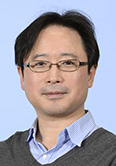
General Relativity proposed by A. Einstein is the most convincing classical theory of gravity describing the dynamical fluctuations of space and time. Cosmological models based on General Relativity have successfully explained a bunch of phenomena observed in the Universe. Nevertheless, some fundamental issues remain long-standing puzzles. Of most prominence is the origin of the two phases of the accelerated expansion of the early and late universe, a.k.a. inflation and dark energy. This exposes a lack of our profound understanding of gravity and spacetime. In this project, we therefore aim to clarify the whole consistent picture of gravity and spacetime, which would make progress toward resolution of the beginning and the accelerated expansion of the Universe.
The research proposal of our group (C3) is two-fold: one is to incorporate the aspects of quantum information—which has been substantially developed during the past decade by the Ryu-Takayanagi formula in the gauge/gravity correspondence—into “braneworld.” A braneworld describes our 4-dimensional universe as a thin membrane corresponding to the boundary of higher dimensional anti-de Sitter spacetime. This model has been motivated by and consistently derived from particle physics. We try to reframe the braneworld model from the perspective of quantum information theory. It is our hope that this new braneworld perspective would be a powerful tool and provide a clue to get deeper insight into problems of universe.
Another blueprint of our research proposals is to identify the direct signature of quantum gravity by exploring a broad range of topics on gravitational physics. The recent experimental activities including the detection of gravitational wave signals and the image of supermassive black holes have reached a sensitivity where the deviation from General Relativity is testable. Stimulated by this new exciting window of opportunity in cosmology/astrophysics, we address phenomena that lead to the robust predictions of quantum aspects of gravity.
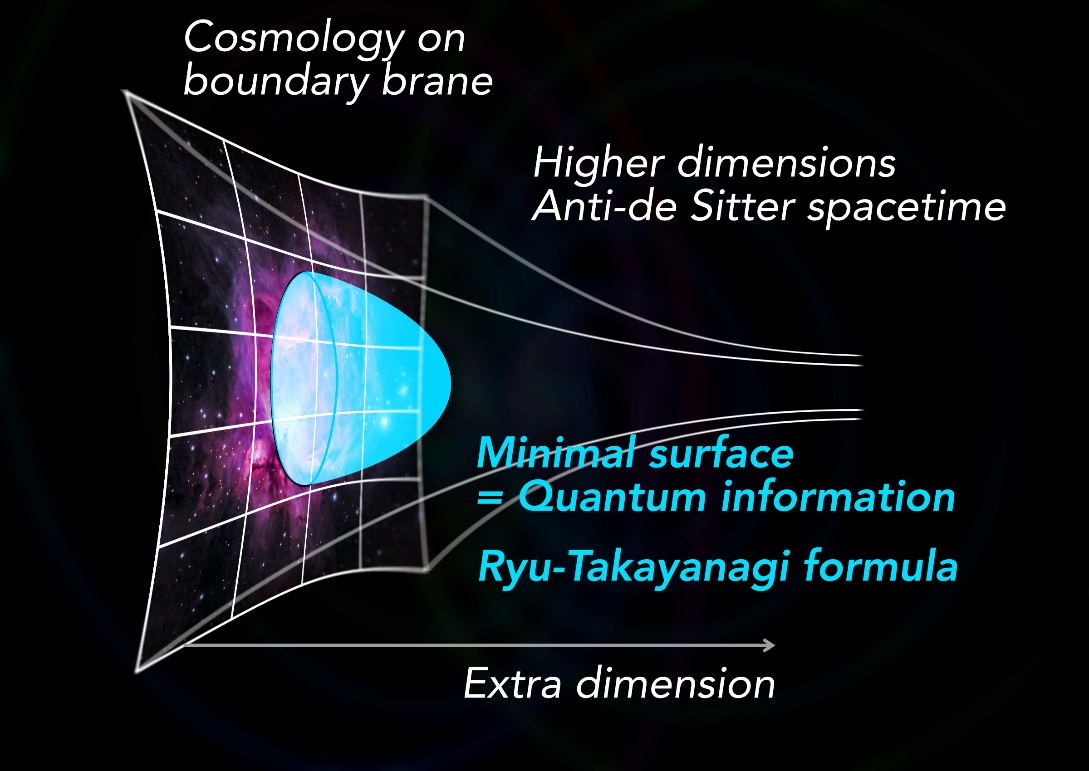
Members in C03
[Principal Investigator]
Tetsuya Shiromizu Graduate School of Mathematics, Nagoya University
[Co-Investigator]
Keisuke Izumi Graduate School of Mathematics, Nagoya University
Tsutomu Kobayashi Department of Physics, Rikkyo University
Masato Nozawa Faculty of Engineering, Osaka Institute of Technology
Norihiro Tanahashi Graduate School of Science, Kyoto University
Hirotaka Yoshino Graduate School of Science, Osaka Metropolitan University
[ExU Postdoctoral Fellows(Research Collaborators)]
Daisuke Yoshida Graduate School of Mathematics, Nagoya University
[Research Collaborators]
Sumio Yamada Faculty of Science, Gakushuin University
[Graduate Students]
Kensuke Sueto Graduate School of Science, Osaka Metropolitan University
Stig Lundgren Graduate School of Mathematics, Nagoya University
[Past Members]
Shunichiro Kinoshita Chuo University
Norichika Sago Kyoto University / Osaka Metropolitan University
Diego Soligon Graduate School of Mathematics, Nagoya University
Lei Fu Graduate School of Mathematics, Nagoya University
Masaya Amo Yukawa Institute for Theoretical Physics, Kyoto University
Tensor Networks and Quantum Many-Body Systems from Quantum Information (21H05191)
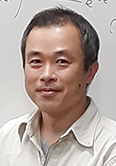
Quantum many-body systems such as quantum spin systems, ultra-cold atoms, and topological quantum matter, have been a central issue in modern condensed matter physics. The key to understanding such complex systems is the structure of quantum entanglement. The primary goal of group D02 is to precisely understand the physics of quantum many-body systems based on a quantitative analysis of quantum entanglement. For this purpose, we focus on tensor networks (TNs) that provide very practical numerical and theoretical frameworks for describing and controlling entangled many-body states. Recent years have witnessed a growing interest in applying TNs to various fields, ranging from quantum information to high-energy physics. In particular, the fusion of different fields has led to nontrivial results such as the relation between the Ryu-Takayanagi formula and the entanglement renormalization group, one of the TN methods. In this research project, motivated by such interesting interdisciplinary developments, we will systematically clarify the controlling mechanism of quantum many-body states using TNs, and then develop a modern theory of quantum many-body dynamics by focusing on mathematical structures behind the TNs and quantum entanglement. Also, we will address TN algorithms for higher dimensions and critical systems. In cooperation with other research groups, moreover, we explore condensed matter analogies of quantum gravity phenomena in realistic experimental situations, which would provide a possible understanding of quantum universe from the condensed matter perspective.
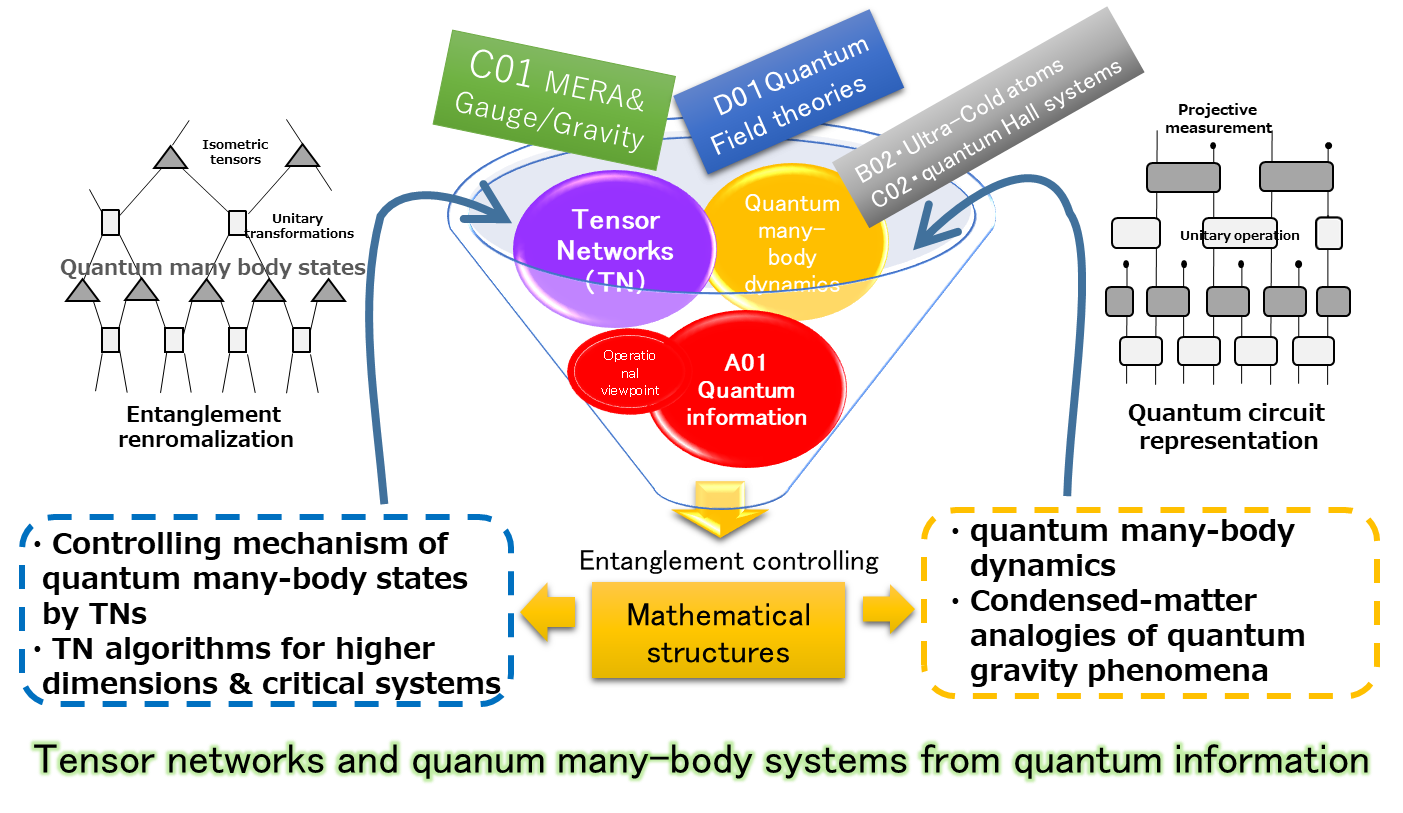
Members in D02
[Principal Investigator]
Kouichi Okunishi Graduate School of Science, Osaka Metropolitan University
[Co-Investigator]
Kenji Harada Graduate School of Informatics, Kyoto University
Chisa Hotta Graduate School of Arts and Sciences, The University of Tokyo
Hosho Katsura Graduate School of Science, The University of Tokyo
Hiroshi Ueda Center for Quantum Information and Quantum Biology, Osaka University
[ExU Postdoctoral Fellows(Research Collaborators)]
Soshun Ozaki, Graduate School of Arts and Sciences, The University of Tokyo
Kohei Fukai Graduate School of Science, The University of Tokyo
[Research Collaborators]
Toshiya Hikihara, Faculty of Science and Technology, Gunma University
Tomotoshi Nishino, Department of Physics, Kobe University
Tsuyoshi Okubo, Graduate School of Science, The University of Tokyo
Shunsuke Furuya Saitama Medical University
Atis Yosprakob Yukawa Institute for Theoretical Physics, Kyoto University
[Graduate Students]
Takuma Kaise Graduate School of Natural Science, Niigata University
[Past members]
Atsushi Iwaki, Graduate School of Arts and Sciences, The University of Tokyo
Koutaro Nakajima, Graduate School of Natural Science, Niigata University
Quantum Black Holes from Quantum Information (21H05184)

Black Holes are probably the most mysterious and interesting objects in the universe. Classically due to their strong gravitational forces, once you enter through the black hole horizon, you can never go out. However if one considers the quantum effects, this is not true anymore. In fact a black hole has definite temperature and radiates thermally (which is so-called Hawking radiation). Furthermore, a black hole has huge entropy, suggesting that a black hole is in fact a coarse-grained description of degenerate states, whose degeneracy is given by exponential of the entropy, according to the Boltzmann’s entropy formula. These suggest that one should also have a fine-grained description of gravity, which is quantum gravity and string theory is the most successful candidate for it. Recent studies show that two important concepts play an important role in understanding quantum gravity/string theory. One is quantum information. The other is gauge/string duality, which claims that certain quantum gravity is equivalent to certain gauge theory. Our main research goal is using these two important concepts, to understand the physics behind the horizon of quantum black holes, and how quantum mechanics is consistent with gravity. More concretely we would like to figure out the answer for the following key questions; how the physical information of the black hole leaks out through the Hawking radiation? How quantum gravity corrects Hawking’s mistake? What are the laws of physics behind the black hole horizon? Through the study of quantum black holes, we would like to understand the basic principles for quantum gravity.
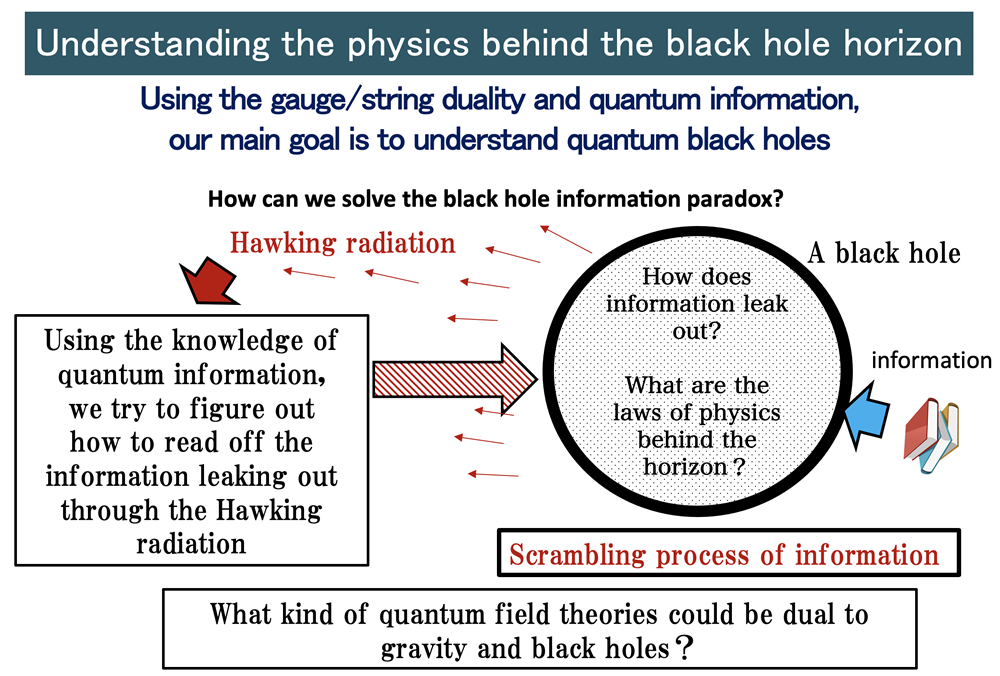
Members in B01
[Principal Investigator]
Norihiro Iizuka Department of Physics, National Tsing Hua University / Yukawa Institute for Theoretical Physics, Kyoto University
[Co-Investigator]
Toshifumi Noumi Graduate School of Arts and Sciences, The University of Tokyo
Masaki Shigemori Department of Physics, Nagoya University
Seiji Terashima Yukawa Institute for Theoretical Physics, Kyoto University
Tomonori Ugajin Department of Physics, Rikkyo University
[ExU Postdoctoral Fellows(Research Collaborators)]
Akihiro Miyata Yukawa Institute for Theoretical Physics, Kyoto University
Sunil Kumar Sake Yukawa Institute for Theoretical Physics, Kyoto University
Nicolò Zenoni Yukawa Institute for Theoretical Physics, Kyoto University
[Research Collaborators]
Takanori Anegawa National Institute of Technology, Yonago College
Koji Hashimoto Department of Physics, Kyoto University
Kengo Maeda Faculty of Engineering, Shibaura Institute of Technology
Mitsuhiro Nishida National Institute of Technology, Yuge College
Kotaro Tamaoka College of Humanities and Sciences Department of Physics, Nihon University
[Graduate Students]
Ryo Nemoto Department of Physics, Nagoya University
Quantum information theoretic approach to the dynamics of quantum field theory (21H05190)
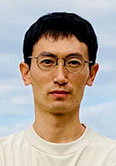
Many of the phenomena around us, such as the Standard Model of elementary particles, are described in terms of quantum field theory. Understanding the physics of the microscopic realm is important not only for investigating the ultimate constituents of matter, but also for exploring the nature of quantum many-body systems, in which many fundamental quantum systems cooperate with each other to create new physical phenomena. The goal of group D01 is to elucidate the dynamics of matter that exhibits such quantum behavior. In quantum information theory, how quantum systems change under various physical manipulations is investigated from a general viewpoint. By adopting the perspective of quantum information theory, new aspects of quantum field theory may be revealed that cannot be understood by conventional methods. In particular, by focusing on the common mathematical structure behind quantum field theory and quantum information theory, we hope to uncover universal properties that all field quantum theories should possess, independent of individual quantum systems. As a complementary approach to examining the dynamics of quantum field theories, we will perform quantum computer simulations of quantum field theories. Many physical systems, including finite density systems and real time systems, are difficult to simulate on classical computers, but are expected to be efficiently simulated on quantum computers. By developing and implementing methods of quantum computation suitable for quantum field theory, we will be able to elucidate important phenomena such as the scattering process of elementary particles and the evaporation process of black holes. Furthermore, we will explore the relationship between the quantum information theory aspect of quantum field theory and holographic principles as well as quantum gravity theory.
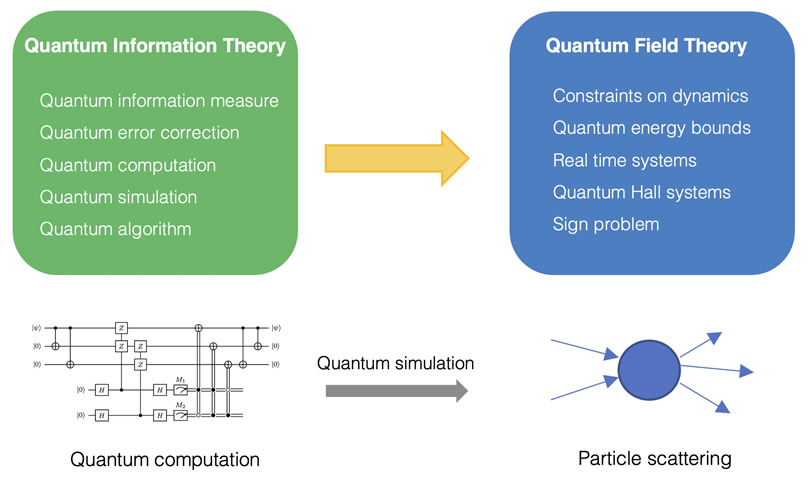
Members in D01
[Principal Investigator]
Tatsuma Nishioka Department of Physics, Osaka university
[Co-Investigator]
Masazumi Honda RIKEN, iTHEMS
Etsuko Itou Yukawa Institute for Theoretical Physics, Kyoto University
Yutaka Matsuo Department of Physics, The University of Tokyo
Takuya Okuda Graduate School of Arts and Sciences, The University of Tokyo
[ExU Postdoctoral Fellows(Research Collaborators)]
Pratik Nandy RIKEN iTHEMS
Dongsheng Ge Department of Physics, Osaka University
[Research Collaborators]
Akira Matsumoto Education Promotion Division, Osaka Metropolitan University
Kazunobu Maruyoshi Faculty of Science and Technology, General Education, Seikei University
Lento Nagano International Center for Elementary Particle Physics, The University of Tokyo
Ryo Suzuki Shing Tung Yau Center of Southeast University
Masahito Yamazaki Department of Physics, The University of Tokyo
Yutaka Yoshida Faculty of Law, Meiji Gakuin University
Atis Yosprakob Yukawa Institute for Theoretical Physics, Kyoto University
[Graduate Students]
Keiichi Ando Department of Physics, Osaka University
Harunobu Fujimura Department of Physics, Osaka University
Rumi Hasegawa Graduate School of Science and Technology, Niigata University
Taichi Nakanishi Yukawa Institute for Theoretical Physics, Kyoto University
Soichiro Shimamori Department of Physics, Osaka University
Hiroki Sukeno Stony Book University
Takahiro Tanaka Yukawa Institute for Theoretical Physics, Kyoto University
Shinichiro Yahagi Department of Physics, The University of Tokyo
[Past Members]
Takahiro Doi Research Center for Nuclear Physics, Osaka University
Daisuke Inotani The Research and Education Center for Natural Sciences, Keio University
Naohisa Sueishi Keio University
Hiroyuki Tajima Department of Physics, The University of Tokyo
Shouichiro Tsutsui iTHEMS, RIKEN
Kohki Kawabata Department of Physics, The University of Tokyo
Quantum cosmology experiments in quantum Hall systems (21H05188)

How did our universe develop from its earliest moments? This is the major question of quantum cosmology, and to answer it great efforts have been made both in theory and in attempts to verify theory by observation of cosmic background radiation. It would be ideal if we could reproduce the origin and evolution of the universe in a laboratory and thereby experimentally verify the theory by controlling key parameters. Therefore, in this research project we aim at implementing quantum cosmology in the laboratory in a toy model which is a theoretically equivalent physical system to the early universe. In this way we seek to provide a rich playground for verification of quantum cosmology theory.
The actual physical system that we deal with comprises electrons in semiconductors. Semiconductor industry consists of state-of¬-the-art modern technologies such as ultra-high quality crystal growth technology, fine process technology, and electronics. In this project, using such mature technologies as a base, we implement toy models of quantum cosmology on a semiconductor chip using quantum Hall edges, which are an intriguing quantum many-body system. Through experiment and theory, we aim at unveiling the mechanism of the origin of the universe. More specifically, (1) we will establish advanced quantum measurement techniques and perform experiments on quantum Hall edges, and (2) examine quantum cosmology by collaborating with various fields of researchers from particle theory, mathematical physics, solid-state theory, quantum information, and cosmology
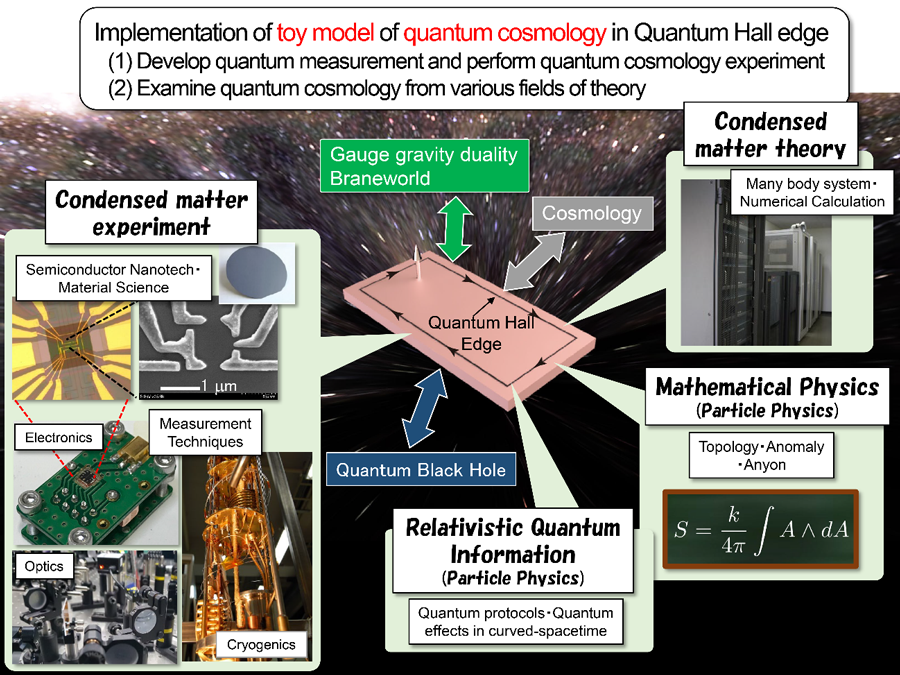
Members in C02
[Principal Investigator]
Go Yusa Department of Physics, Tohoku University
[Co-Investigator]
Naokazu Shibata Department of Physics, Tohoku University
Masahiro Hotta Department of Physics, Tohoku University
Kazuya Yonekura Department of Physics, Tohoku University
[Research Collaborators]
Takaaki Mano National Institute for Materials Science
Kazuhiro Yamamoto Department of Physics, Kyushu University
Yasusada Nambu Department of Physics, Nagoya University
Chisa Hotta Graduate School of Arts and Sciences, University of Tokyo
Kazunori Nakayama Department of Physics, Tohoku University
Vladimir Umansky Weizmann Institute of Science
Koji Yamaguchi The University of Electro-Communications
Kenichi Sasaki NTT Basic Research Laboratories
Kazuaki Takasan Department of Physics, University of Tokyo
Yuki Sugiyama The Institute for Solid State Physics, the University of Tokyo, Specially Appointed Research Fellow
Nicholas Moore Department of Physics, Tohoku University
[Students]
Yuka Kaku Department of Physics, Nagoya University
Yuki Osawa Department of Physics, Nagoya University
Yunhyon Jeong Department of Physics, Tohoku University
Yuichi Sata Department of Physics, Tohoku University
Takahiro Yokokura Department of Physics, Tohoku University
Kazunori Akiyama Department of Physics, Tohoku University
Hiromasa Tajima Department of Physics, Nagoya University
Masaki Fukuda Department of Physics, Tohoku University
Quentin France Department of Physics and Mathematics, Sorbonne University
Kodai Sugizaki Department of Physics, Tohoku University
Komei Kobayashi Department of Physics, Tohoku University
Yuma Hiraga Department of Physics, Tohoku University
Tsubasa Sugeno Department of Physics, Tohoku University
Taiki Karezaki Department of Physics, Tohoku University
Riku Yoshimoto Department of Physics, Nagoya University
[Past Members]
Donghyeon Kim Department of Physics, Tohoku University
Jun Tsujimura Department of Physics, Nagoya University
Akinori Kamiyama Department of Physics, Tohoku University
Ikuya Marumoto Department of Physics, Tohoku University
Yasuaki Hayafuchi Department of Physics, Tohoku University
Ryota Konno Department of Physics, Tohoku University
Reiji Kawada Department of Physics, Tohoku University
Yutaro Takahashi Department of Physics, Tohoku University
Felix Borchers Heidelberg University
Shun Kobayashi Department of Physics, Tohoku University
Kento Watanabe Department of Physics, Tohoku University
Ayaka Kondo Department of Physics, Tohoku University
Kairi Kaneta Department of Physics, Tohoku University
Taesung Koh Department of Physics, Tohoku University
Tomoya Suzuki Department of Physics, Tohoku University
Quantum Cosmology from Quantum Information (21H05187)
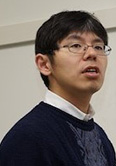
The geometric formula of entanglement entropy (Ryu-Takayanagi formula), which connects quantum information and gravity theory, has led to the prediction that the universe in gravitational theory is a collection of quantum information, which has attracted worldwide attention. The aim of group C01 is to develop this prediction by introducing the viewpoint of quantum information into high energy theory, and to uncover the basic theory of the "dynamics of the creation of the universe (quantum universe)," which is one of the three problems of extreme universe. The foundation for this is the "gauge-gravity correspondence," or the hypothesis that the gravitational theory of the anti de Sitter universe is equivalent to a theory of quantum many-body system. The gauge-gravity correspondence is a powerful idea that has passed enormous verifications, but the basic principle of why this correspondence arises still remains unknown. If this principle is understood completely, it will be possible to elucidate the mechanism of the creation of the universe from nothing and eventually to construct the ultimate physical laws. The anti-de Sitter universe is a universe with negative curvature, while the real universe we live in and the process of creation of the universe are thought to have positive curvature, i.e., a de Sitter universe. In this research, we will first clarify the basic principle of gauge-gravity correspondence by combining the methods of quantum information theory and gauge-gravity correspondence, and then use it as a hint to extend the gauge-gravity correspondence beyond the anti-de Sitter universe to more general universes including the de Sitter universe. This will finally provide us with the fundamental theory for quantum cosmology.
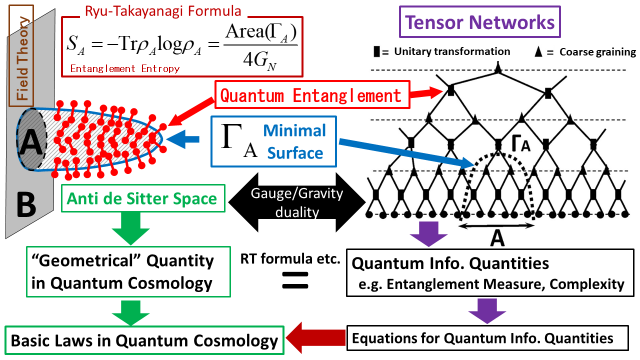
Members in C01
[Principal Investigator]
Tadashi Takayanagi Yukawa Institute for Theoretical Physics, Kyoto University
[Co-Investigator]
Yasuaki Hikida Osaka Institute of Technology
Kazumi Okuyama Faculty of Science, Shinshu University
Yasuhiro Sekino Faculty of Engineering, Takushoku University
Shigeki Sugimoto Department of Physics, Kyoto University
[International Research Collaborators]
Shinsei Ryu Princeton U., USA
Beni Yoshida Perimeter Institute, Canada
[ExU Postdoctoral Fellows(Research Collaborators)]
Jonathan Harper Yukawa Institute for Theoretical Physics, Kyoto University
[Research Collaborators]
Kanato Goto Yukawa Institute for Theoretical Physics, Kyoto University
Tomotaka Kitamura Institute of Theoretical Physics, Rikkyo University
Shoichiro Miyashita Graduate School of Advanced Science and Engineering, Waseda University
Kazuhiro Sakai Institute of Physics, Meiji Gakuin University
Takahiro Uetoko National Institute of Technology, Kagawa College
Masamichi Miyaji Yukawa Institute for Theoretical Physics, Kyoto University
Kenta Suzuki Department of Basic Science, College of Arts and Sciences, The University of Tokyo
Shan-Ming Ruan Yukawa Institute for Theoretical Physics, Kyoto University
Ali Mollabashi IPM - Institute for Research in Fundamental Sciences, Iran
Pawel Caputa Stockholm University
Zixia Wei Harvard University
Takato Mori College of Science, Rikkyo University
Yuya Kusuki Institute for Advanced Study, Kyushu University
Yasuaki Nakayama NTT Communication Science Laboratories
Peng-Xiang Hao Tsinghua University / Yukawa Institute for Theoretical Physics, Kyoto University
Masashi Kawahira Department of Physics, Kobe University
[Graduate Students]
Yusuke Taki Yukawa Institute for Theoretical Physics, Kyoto University
Taishi Kawamoto Yukawa Institute for Theoretical Physics, Kyoto University
Naoki Ogawa Yukawa Institute for Theoretical Physics, Kyoto University
Yu-ki Suzuki Yukawa Institute for Theoretical Physics, Kyoto University
Takashi Tsuda Yukawa Institute for Theoretical Physics, Kyoto University
Kazuki Doi Yukawa Institute for Theoretical Physics, Kyoto University
Hiroki Kanda Yukawa Institute for Theoretical Physics, Kyoto University
Kotaro Shinmyo Yukawa Institute for Theoretical Physics, Kyoto University
Kenya Tasuki Yukawa Institute for Theoretical Physics, Kyoto University
Ryota Maeda Yukawa Institute for Theoretical Physics, Kyoto University
Michitaka Kohara Yukawa Institute for Theoretical Physics, Kyoto University
Nanami Nakamura Yukawa Institute for Theoretical Physics, Kyoto University
Kosei Fujiki Yukawa Institute for Theoretical Physics, Kyoto University
Ryo Li Yukawa Institute for Theoretical Physics, Kyoto University
[Past Members]
Masahide Sato Yukawa Institute for Theoretical Physics, Kyoto University
Ibrahim Akal Yukawa Institute for Theoretical Physics, Kyoto University
Yoshiki Sato Yukawa Institute for Theoretical Physics, Kyoto University
Understanding quantum black holes through the study of artificial quantum matter (21H05185)

A black hole gradually evaporates into thermal radiation, which is called the Hawking radiation, and finally disappears. This means that whatever information thrown into a black hole will eventually be “lost”. However, this contradicts the unitary time evolution, with the information on the initial state being conserved, in quantum mechanics. This apparent contradiction is called the “black hole information loss paradox”. Clarifying the mechanism by which information appears to be lost is one of the major objectives of this research area which aims to construct a theory of the “extreme universe” that integrates quantum theory and gravity theory.
The aim of group B02 is to promote the study of the quantum features of black holes, one of the key issues of the “extreme universe”, through the collaboration of cold atom experiments and theoretical studies. According to the gauge–gravity correspondence, the evaporation process of a black hole could correspond to the dynamics of a quantum matter.
Therefore, we will elucidate the nature of black holes by experimentally investigating the non-equilibrium dynamics of cold atomic systems in the laboratory which is a highly-controllable artificial quantum matter.
We will experimentally and theoretically perform research on (I) measurement-induced quantum phase transitions due to the effects of dissipation and/or measurement and (II) out-of-time-ordered correlation as the characterization of the delocalization of quantum information in cold atomic systems. In parallel, we will develop the theory for non-equilibrium phase transitions, methods for calculating non-equilibrium states using quantum computers, and evaluate the quantum entanglement in quantum many-body systems that are thought to correspond to quantum black holes and gauge gravity, such as the Sachdev-Ye-Kitaev model.
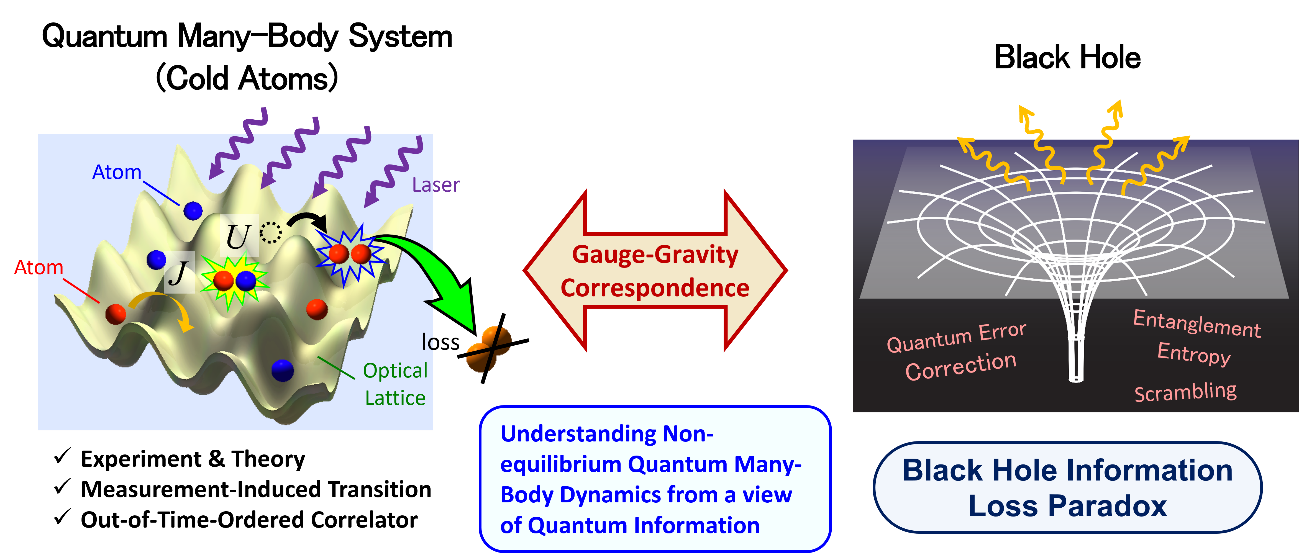
Members in B02
[Principal Investigator]
Masaki Tezuka Department of Physics, Kyoto University
[Co-Investigator]
Shuta Nakajima Center for Quantum Information and Quantum Biology, Osaka University
Eriko Kaminishi Quantum Computing Center, Keio University
Takashi Mori Department of Physics, Keio University
Daisuke Yamamoto Department of Physics, Nihon University
[International Research Collaborators]
[ExU Postdoctoral Fellows(Research Collaborators)]
Kazuya Yamashita Center for Quantum Information and Quantum Biology, Osaka University
Giacomo Marmorini Department of Physics, Nihon University
[Research Collaborators]
Ippei Danshita Department of Physics, Kindai University
Kazuaki Takasan Department of Physics, University of Tokyo
Kazuki Yamamoto Department of Physics, Institute of Science Tokyo
Tanay Pathak Department of Physics, Kyoto University
[Graduate Students]
Juan Pablo Bayona Pena YITP, Kyoto University
Yuki Miyazaki Graduate School of Science and Engineering, Aoyama Gakuin University
Honami Fukushima College of Humanities and Sciences, Nihon University
[Past members]
Kou Gondaira Graduate School of Science and Engineering, Aoyama Gakuin University
Black Holes and Singularities from Quantum Information (21H05186)

The aim of group B03 is to understand fundamental nature of quantum black holes by developing a new approach to quantum gravity that incorporates quantum information into general relativity. Black holes in general relativity are the simplest but one of the most mysterious objects in the universe since their basic constituent is merely the spacetime curvature, but they nevertheless possess thermodynamic properties, such as temperature and entropy. The possibility that a black hole can evaporate by emitting thermal Hawking radiation has raised the fundamental question, called the “black hole information paradox,” which concerns over general relativity and quantum information. The event horizon of a black hole is the causal boundary of domain of outer communications, whose structure and dynamics are governed by the null energy condition via the Einstein equations, and whose sectional area corresponds to the entropy, known as Bekenstein-Hawking entropy. The former aspect suggests that quantum mechanically corrected null energy conditions would play a significant role in understanding the structure and dynamics of quantum black holes. The latter aspect exhibits the close connection between the black hole entropy and quantum entanglement entropy, which characterizes the correlations between subsystems separated by a boundary surface in a larger quantum system. An increasing number of evidence shows that the black hole entropy can be described as an entanglement entropy via the gauge-gravity correspondence. Furthermore, recent development of the holographic principle indicates that geometric description of---not only a black hole event horizon but also---a various type of causal boundaries can admit the holographic description as a quantum entanglement via the Ryu-Takayanagi formula, which connects gravity with quantum information. It is thus anticipated that quantum aspects of gravity would become most tangible around causal boundaries and be described most effectively by using the language of quantum information theory. These observations form our view point of “extreme universe” that gravity/spacetime is a collection of quantum information. Based on these ideas, we will derive basic formulas that govern the dynamics of quantum black holes by unifying geometric and quantum information theoretic aspects of causal boundaries, and thereby attempt to establish a theoretical foundation for extreme universe.
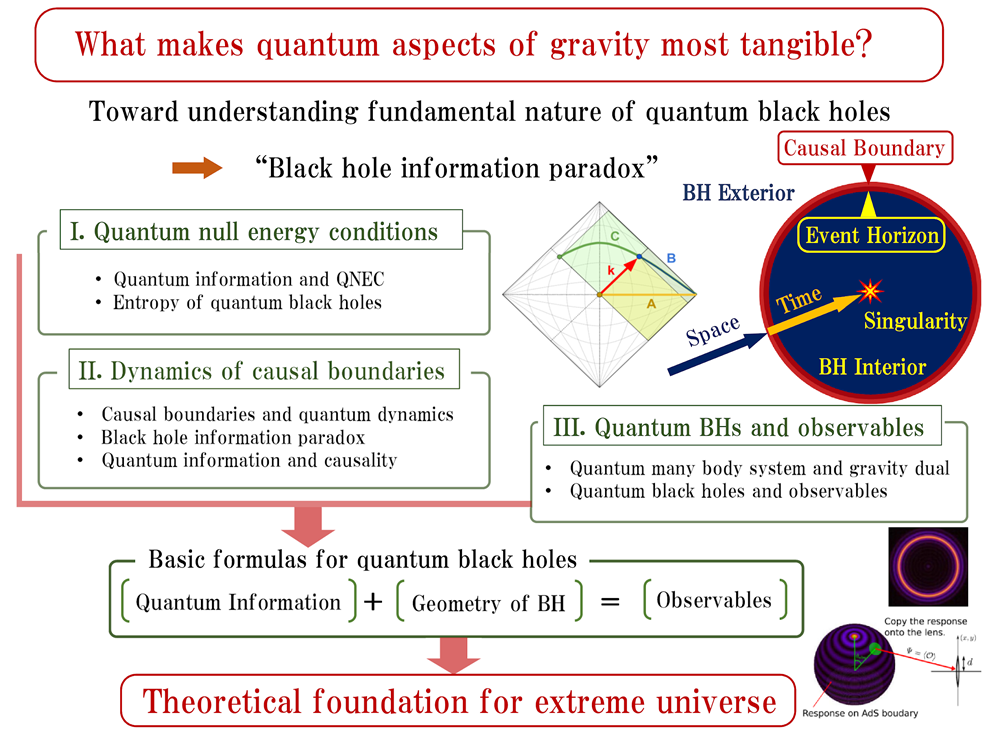
Members in B03
[Principal Investigator]
Akihiro Ishibashi(B03-PI)Graduate School of Science, Nagoya University
[Co-Investigator]
Kengo Maeda Faculty of Engineering, Shibaura Institute of Technology
Keiju Murata Department of Physics, Nihon University
[ExU Postdoctoral Fellow(Research Collaborators)]
Yoshinori Matsuo Department of Physics, Kindai University
[Research Collaborators]
Takashi Okamura Department of Physics, Kwansei Gakuin University
Gen Kimura Systems Engineering and Science, Shibaura Institute of Technology
Toshifumi Noumi Graduate School of Arts and Sciences, The University of Tokyo
Shunichiro Kinoshita Academic Foundations Programs, Kanazawa Institute of Technology
[Post-doc Fellows]
[Graduate Students]
Kodai Ueda Department of Physics, Kindai University
Daiki Yamaguchi Department of Physics, Kindai University
Satoshi Matsumoto Department of Physics, Kindai University
